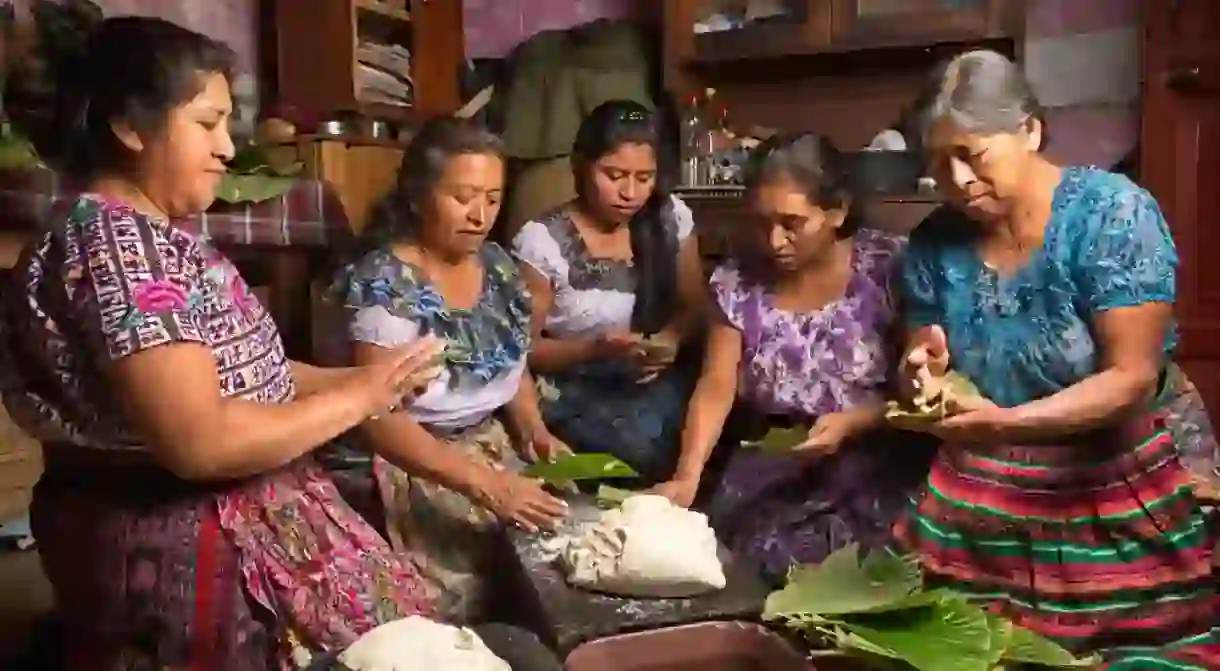Guatemalan Traditions and Customs Only Locals Will Understand

The largest country in Central America has plenty of fascinating cultural traditions that you can get involved with. Here are some of the most interesting ones to look out for on your trip to Guatemala.
Did you know – Culture Trip now does bookable, small-group trips? Pick from authentic, immersive Epic Trips, compact and action-packed Mini Trips and sparkling, expansive Sailing Trips.
Bare knuckle boxing on Good Friday
The highland town of Chivarreto is the venue for bare-knuckle fights each year on Good Friday. Explanations for the tradition vary, but it makes for a great day out. Head to the northern city of Quetzaltenango and look for onward transport.
Drunken horse racing
In the town of Todos Santos, All Saints’ Day celebrations take a unique form. Locals get trashed on alcohol before attempting to race horses through town watched by friends, family and a growing number of intrigued tourists.
Holy Week parades in Antigua Guatemala
Easter is a big deal in the colonial city of Antigua, where religious processions wind their way through town during Holy Week. The parades draw thousands of visitors from around the world, so you’ll need to book accommodation well in advance if you want to be there.
Leaving cigarettes and alcohol for a syncretic saint
The mixture of Mayan and Roman Catholic traditions has left Guatemala a fascinating cultural legacy. One of the strangest components is Maximon, also known as San Simon, a saint that grants favors in return for cigarettes, alcohol and other gifts left by followers at his altar.
Dancing on your family grave on All Saints’ Day

While in some parts of the world graves are not to be trodden on or even touched, things are different in Guatemala. Here it is tradition in certain parts of the country to have a party in the cemetery on November 1, drinking and dancing in honor of deceased relatives.
Patterned clothing which reveals where you are from

Visitors to Guatemala cannot fail to notice the brightly-patterned traditional dress of the Mayan indigenous community. What is not immediately obvious is that these clothes can tell you where someone is from if you know how to read them; each town and village uses different designs to the next.
Giant kites to honor the dead
Another All Saints’ Day tradition are the huge kites that are constructed in Sumpango and Santiago Sacatepequez. Head to these two villages near Antigua to see massive kites decorated in bright colors, often with political messages. Both sites are within 30 minutes of Antigua Guatemala.
Marimba music dominates in traditional communities
A large wooden xylophone-style instrument known as a marimba is the most emblematic in traditional Guatemalan music. You will hear it at parties and festivals among older generations, but younger people are increasingly listening to reggaetón and other musical styles.
Eating fiambre is a treat not to be missed

Every year Guatemalan families prepare and eat the traditional fiambre salad to eat on the Day of the Dead and All Saints’ Day. The huge salad can be made with as many as 50 ingredients, but the most important are sausages, cold cuts, pickled baby corn and beets.
Flying dancers for a patron saint
The town of Chichicastenango puts on quite a show for its patron saint, Santo Tomas, from December 13-21 every year. There are parades, fireworks and the infamous palo volador, in which two dancers jump from a pole that can be as much as 100 feet high before spinning slowly to the ground hanging from a rope.
Traditional Mayan calendars still in use
For many indigenous Mayans, the Gregorian calendar is used only to govern their interactions with other communities. The use of the traditional Mayan calendar is still practiced in many communities, where it is used to help people understand the world and its cycles.













